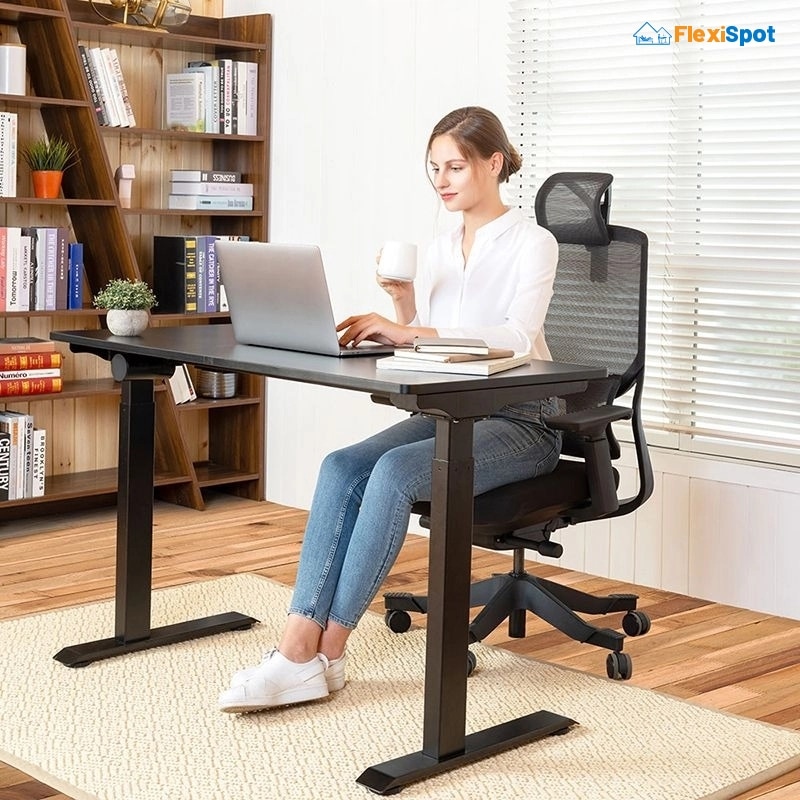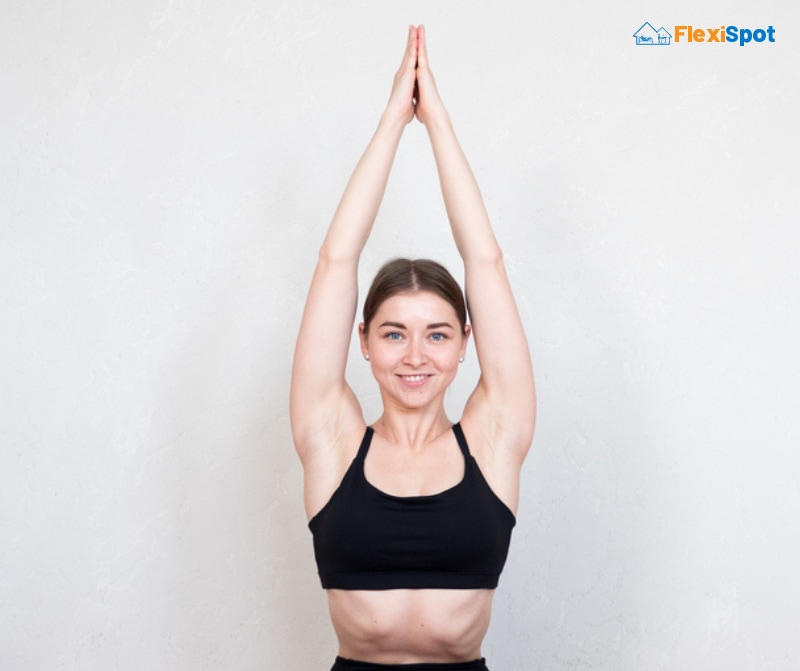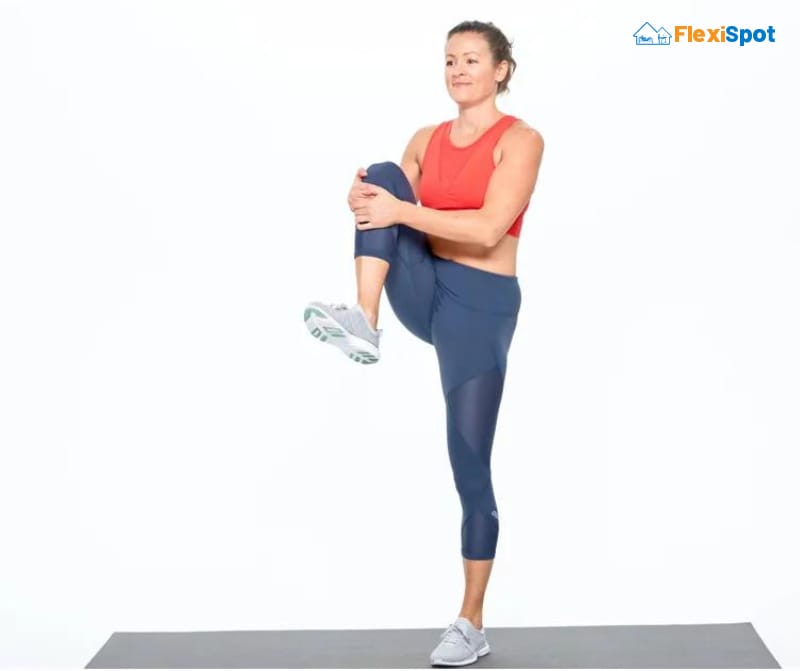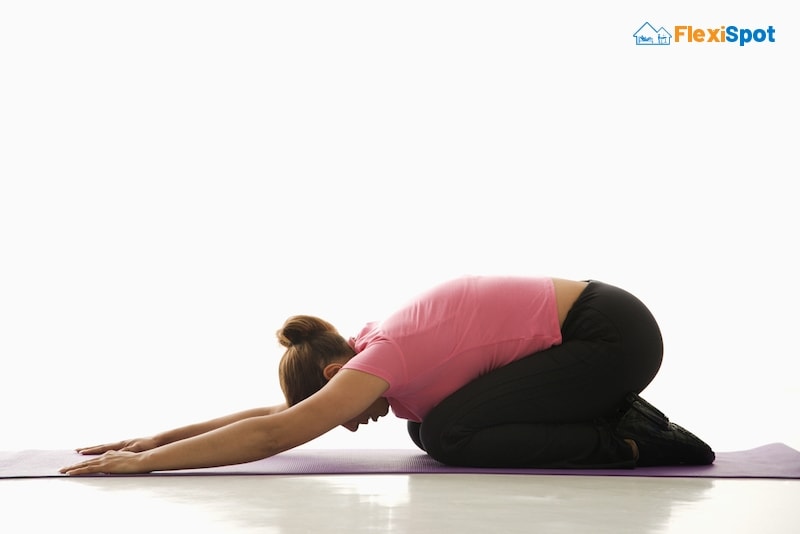Sitting with your back curved and your neck hanging forward is a common practice of those working desk jobs. Be it someone working from the office or working from home; bad posture plagues pretty much every white-collar American Joe. Stats show that approximately 80% of Americans suffer from back-related complications resulting from years of bad posture. Considering the stats, it's safe to say that improper posture is a widespread issue, warranting a discussion on how to improve posture.
While the health problems due to improper sitting or standing position affect a large majority of people, not many of those realize that and continue to regard bad posture as an aesthetic concern. But even so, sharing a proper posture guide with some effective ergonomic exercises remains essential so that people can fix their vertebral columns and learn to maintain an erect body stance.
Keeping that in mind, here is everything you need to know about having proper posture and how to fix it if you already don't.
What Classifies As the Right Posture
Before we move on to talk about fixing your sitting or standing stance, knowing what qualifies as proper posture is crucial.
Humans have two postures; static and dynamic.
Static Posture
As the title suggests, static posture refers to the position a person upholds while they are still. That is, when you are sitting or standing in one place, your posture will be static.
Dynamic Posture
Contrary to static, dynamic posture is an individual's body's position, particularly their backs when moving.
In order to maintain your spine alignment, you need to have correct static and dynamic postures. Our spinal cord features three curves throughout, one at the neck and the remaining two in the middle and lower back. A good posture will not make the spine's natural bends any curvier.
From a visual point of view, proper posture should ensure the following
Your ear lobes fall right above the center of your shoulders
Your shoulders and hips are aligned
Your ankles and hips are also aligned
Feet shoulder-width apart with the body's weight distributed evenly over both feet.
If you want to figure out whether you have the correct posture or not, try this exercise.
Stand against a wall in such a way that the back of your head, shoulders, and hip fall in a straight line, touching the wall. If any point of your backbends forward and doesn't align with the rest of the points, know that your posture is crooked, and you should work on it.
Also, don't forget to move your feet a few inches forward, 2-4, from the wall so that your spine curves are aligned. As already mentioned, if any section of your back bends forth more than the rest, you will know that your posture isn't correct.
But since you’d be facing the other side, you cannot know if any of your spine curves have gotten curvier. To figure that out, slide your hand in each arc and assess the space between the back of your palm and the wall. If all three curves have the same room between the wall and your hand, you are good to go. If not, then you will have to work on fixing your posture.
Bad Posture and How to Fix It
The easiest way to spot bad posture is by noticing if you are hunching forward at your neck, middle, or lower back. In other words, if any of the curves in your spine have gotten deeper, you should know that your body stance is not correct.
Fixing Improper Posture
There are many ways to improve your posture, such as working on a suitable ergonomic desk, such as Willow Solid Wood Standing Desk and chair. Frequently changing positions while working at a desk is another way to fix posture and keep the spine healthy. Additionally, standing up and walking around every now and then can also help individuals work on their spine position.
Lastly and perhaps most importantly, staying active and performing various exercises can significantly improve a person’s posture. Moreover, stretches also enhance the vertebral column’s alignment.
If you don't know or haven't ever tried any ergonomic exercises for your back, here are 5 movements that will help you with your sitting/standing position.
Wrist Stretch
There are two types of wrist stretches that are excellent for a sitter’s back.
#1
Sit on the edge of your chair so that there is ample space behind your back. Now move your hands back around your body by stretching your shoulder blades and constricting your upper back muscles.
Interlock your fingers and stretch your hands further back so much so that you feel a stretch in your upper back, neck, arms, and especially your wrists. You can turn your intertwined fingers around so that your palms are facing the chair's backrest. Repeat the movement multiple times or whenever your back and neck feel strained.
#2
For the second wrist stretch also, sit on your seat's edge. Move your chair away from your desk so that you have enough room before yourself to stretch your arms. Bring your hands forward, twist your wrists by turning them the other way. That is, move your hands so that your palms face away from your body. Once you have your arms elongated and wrists twisted, move your hands away from your body and do a back and forth motion.
In other words, take your hands away from each other in opposite directions, then bring them back towards one another. Repeat the movement minimum of 5 and a maximum of 10 times at any given time.
An essential point for you to remember is not to hunch forward or hang your neck towards your chest while doing the exercise. You need to sit straight with an erected spine to be able to feel the stretch right.
Neck Stretches
Neck stretches are the easiest to do when working at the office. There are two movements that qualify as neck stretches. The first one entails bending the neck forward and backward doing chin tucks. And the second one involves moving the neck sideways for lateral stretches.
For this exercise, you need to have your spine straight and feet flat on the floor. Now bring your neck forward by bending the muscles performing a chin tuck. Remain in this position for a few seconds to straighten your spine and back neck well.
Next, bring your neck to its neutral position, then move it backward, elongating the front neck muscles. Both these movements should give you pleasurable pain in the upper back.
For the lateral stretches, move your neck side to side slowly, really straightening the muscles. Side-to-side neck stretches should also impact your shoulder blades; you should feel a stretch in the area from your shoulders all the way to the neck.
Repeat said movements 5 to 10 times in one round. If you want to test yourself more, you can do 2-3 rounds of neck exercises to work it well.
Seated Side Stretch
To do this moment, sit straight and bring your hands up over your head and place your palms in a praying pose. Then slowly move your body towards either the right or left side while your hands remain in the prayer pose. Remember that your movement should generate from your torso and not your hands. Although your arms will move, they will not be the source.
When you move your lower torso laterally, your hands only have to follow. Remain at one side for 5 seconds once your body is bent to the side. Slowly change the side and rotate your body in the opposite direction.
Seated side stretches are excellent for the neck and back as they elongate the spine.
Knee Squeeze
Knee squeeze may not be easy to perform at the office, but if you work from home, you shouldn't have any trouble doing it.
Knee squeeze is essentially a slow-paced high knees workout. Here is how you do it.
Stand straight with your feet shoulder-width apart and tight core. Bring your one knee towards the check by moving your calf upwards- do all of this with the help of your lower ab muscles. This exercise also straightens the spine but from the bottom.
Visually, your calf and thigh should make a right angle while your thigh stays parallel to the floor. Stay in this position for a few seconds before switching the knee. Go back and forth between the two legs as long as you can or wish to do.
Child’s Pose
The child's pose is arguably one of the best positions to work on your posture. Sit on the floor over your calves (be sure to spread your weight evenly on both legs) and bend your back forward so much so that your chest and face touch the ground. Then stretch your hands above your head. Remain in this stance for 5 to 10 long breaths.
One way of getting into the child’s pose is by going on all fours and extending your arms forward as much as you can. Then slowly drop your hips to the ground so that your knees and front of the calves are touching the floor. Rest your forehead on the ground, and voila, you will be in the child's pose. Remain like this for at least 5 seconds to stretch your back well.
Ending Note
Bad posture does a lot more than just impact your appearance by making you appear sloppy. It affects your spine's position, restricts blood flow in the back, and triggers headaches often. If you want to save yourself from the complications of improper posture, be sure you use suitable ergonomic products, such as Willow Solid Wood Standing Desk, and do exercises to keep your body stance right.








